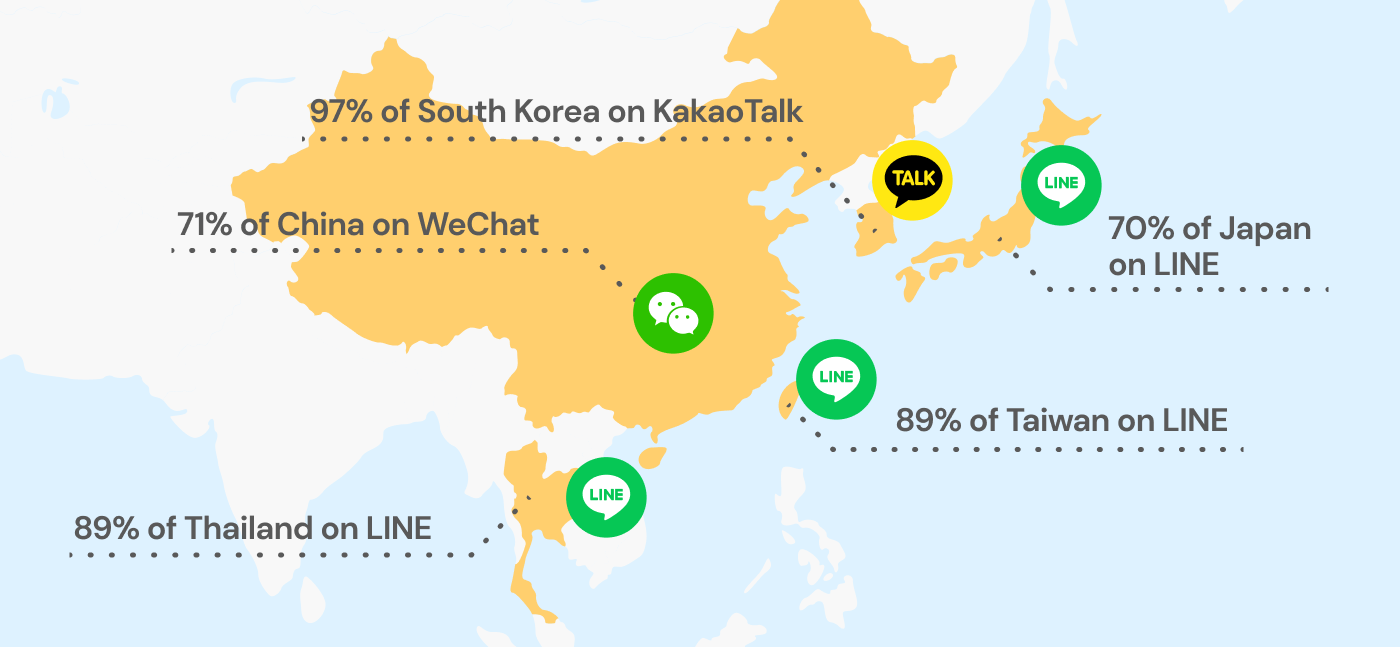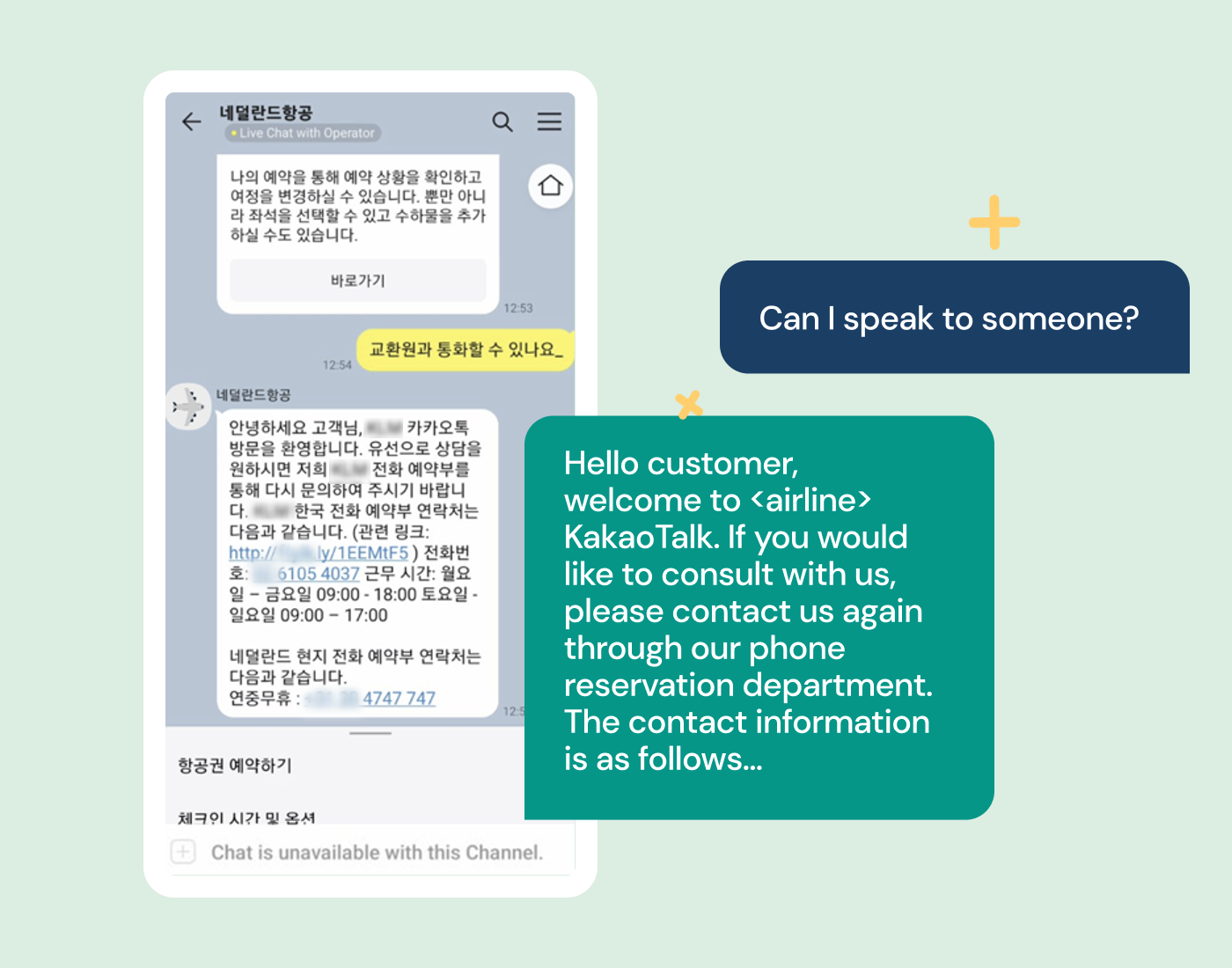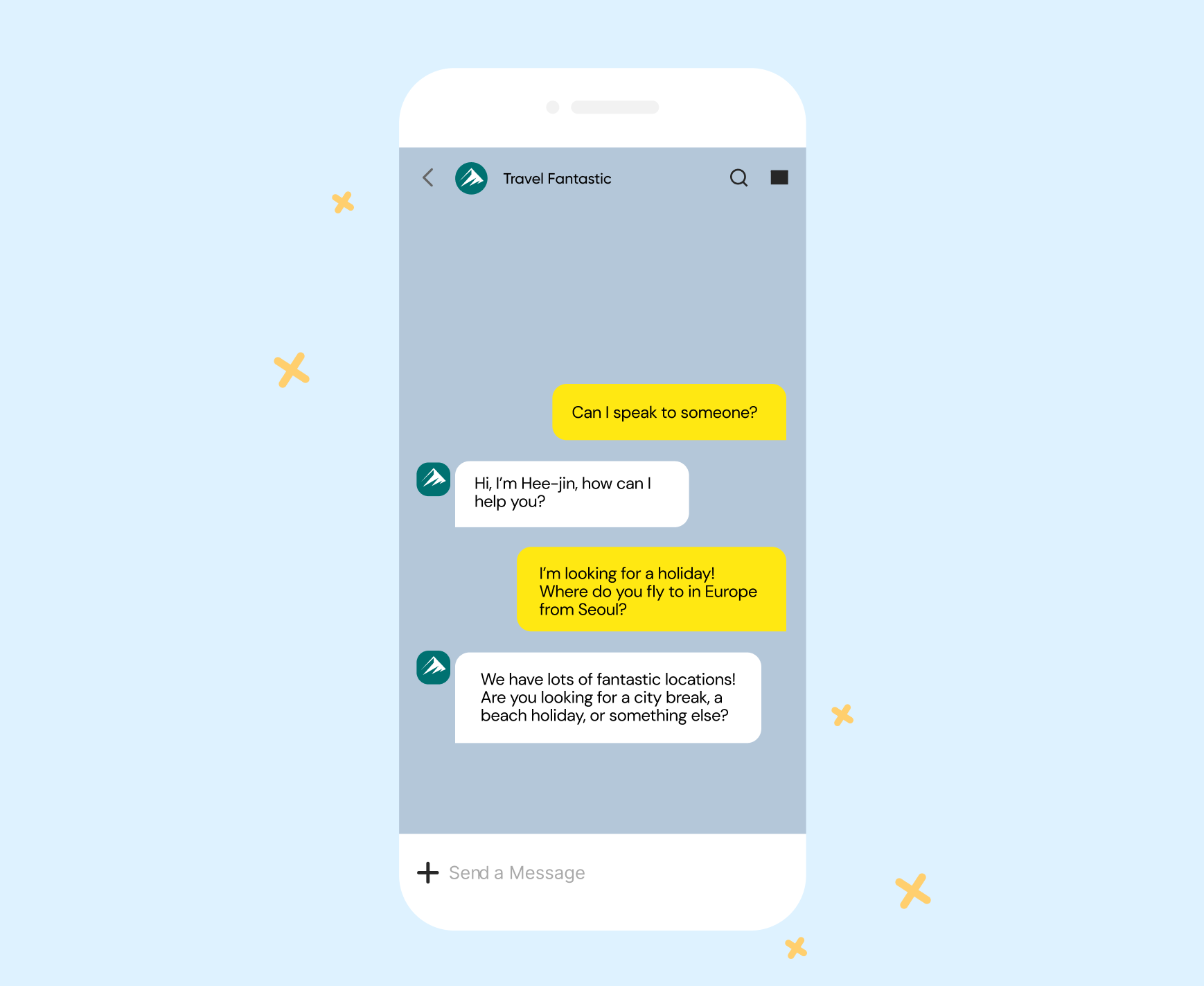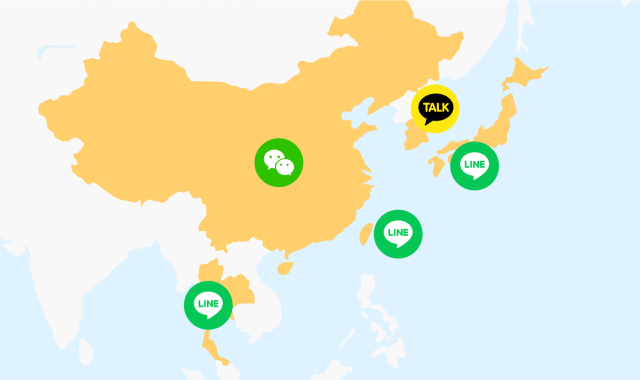In this article:
- What is a super-app?
- How can businesses use LINE, KakaoTalk, and WeChat messaging effectively?
- 1. WeChat business messaging to brew more followers
- 2. KakaoTalk business messaging to feed conversions
- 3. LINE business messaging to gain a bigger slice of revenue
- Business messaging over KakaoTalk, WeChat, and LINE is easier than ever before
Messaging apps, and social media, are absolutely massive in Asia! According to We Are Social’s 2022 study, the Asia-Pacific region has 1.86 billion active social media users and twice as many mobile phone handsets - each an opportunity for customer engagement.
Many western brands miss this opportunity simply because they don’t understand the digital landscape or the specific experiences Asian customers crave.
What is a super-app?
WhatsApp, Messenger, Instagram, and Telegram are popular in many Asian countries, but Japan, China, South Korea, Thailand, and Taiwan are the home of the ‘super-app’.
Unlike the humble messaging app, super-apps like WeChat, KakaoTalk, and LINE do everything. Life takes place on these apps - ordering taxis, booking holidays, managing finances, online shopping, gaming, and social media. Of course, messaging friends, family, and businesses are part of their appeal, but they offer so much more!

Because of the vast services these apps offer, they dominate daily life. In fact, it would be difficult to live a modern life in China without WeChat.
How can businesses use LINE, KakaoTalk, and WeChat messaging effectively?
Sadly, brands that aren’t offering these apps run the risk of losing customers or, at best, looking out of touch and dated. It’s only natural for Asian customers to assume they can chat with businesses over these apps – it’s what they’re used to.
Let’s look at a genuine customer chat between a huge European airline over KakaoTalk. It’s a similar situation on the other two apps.

It’s not a great experience!
Western brands usually only have a business profile in Asia to maintain a presence. Maybe they’ll do a bit of paid advertising on the app. But more often than not, the auto-response in their app is set to reply with a phone number. And, let’s be realistic, how many people will call that number? Questions go unanswered, and customers move on.
Whether customers are responding to an advert or looking for support, brands need to be available in the moment of need on the channel of choice. When other brands are smashing it on more localized apps, it’s not hard to guess who’ll come out on top!
How about we try that airline chat again with a little super-app magic:

Now, this is a good customer experience!
Brands are starting to wake up to the power of conversational messaging on super-apps like LINE, WeChat, and KakaoTalk. These trailblazers have shown that personalized conversations improve ROI and engagement levels in Asia.
Let’s take a look at some examples:
1. WeChat business messaging to brew more followers
Starbucks ran a marketing campaign asking WeChat users to send them an emoticon on WeChat. Starbucks then replied with a song to match the emoji. A simple, fun, engaging way to use WeChat business messaging and boost followers by 62,000 in just one month! By the end of the campaign, Starbucks was getting 22,000 messages a day! That’s 22,000 opportunities to promote their brand and products.
2. KakaoTalk business messaging to feed conversions
Dutch baby nutrition company Nutricia has a team of nutritional advisers on hand to answer questions from their Korean customers on KakaoTalk. This has sped up the sales process, offered a top-notch customer experience, and led to an 80%+ conversion rate! Proving that answering pre-sales questions is an absolute must for brands looking to sell in these markets.
3. LINE business messaging to gain a bigger slice of revenue
Dominos Pizza launched their pizza ordering chatbot over LINE in Japan so that customers could order right in the app. Local businesses do it, so why wouldn’t Dominos? The bot sold 100 million yen (around $700k) of pizza in its first month!
Business messaging over KakaoTalk, WeChat, and LINE is easier than ever before
These examples aren’t typically something western companies could do at the drop of a hat in Asia – they’re usually managed by agencies.
If a business wants to take control, devs will need to get involved and connect all the dots, or brands need to find an off-the-shelf product with the channels built-in. Sounds simple, but these apps are designed for the local market. They’re not super user-friendly to foreign development teams.
But, communications providers like Sinch are tearing down the barriers to entry and offering easy ways for non-local businesses to use these channels.
At Sinch, we integrated all three super-apps (plus all the more familiar messaging channels) into one solution. So you can integrate a single API or software application into your business and easily chat with all your customers no matter where they are.
We also provide documentation and support in English, which means the only local knowledge you need to get started is agents and/or chatbot writers with local language skills!
We’ve focused very much on inbound questions from customers in this blog. It’s important to point out that all three super-apps can also send marketing and/or notification messages to help you connect with customers across the entire customer journey.
So now there’s no excuse for a bad experience turning away customers!
If you’re working for a business operating in Thailand, Taiwan, Japan, China, or South Korea, or if you’re planning to, you know what needs to be done to provide a 5-star customer experience and grow your business.
Want to learn more about the super-app messaging channels? Check out our ultimate guide to conversational messaging channels!



